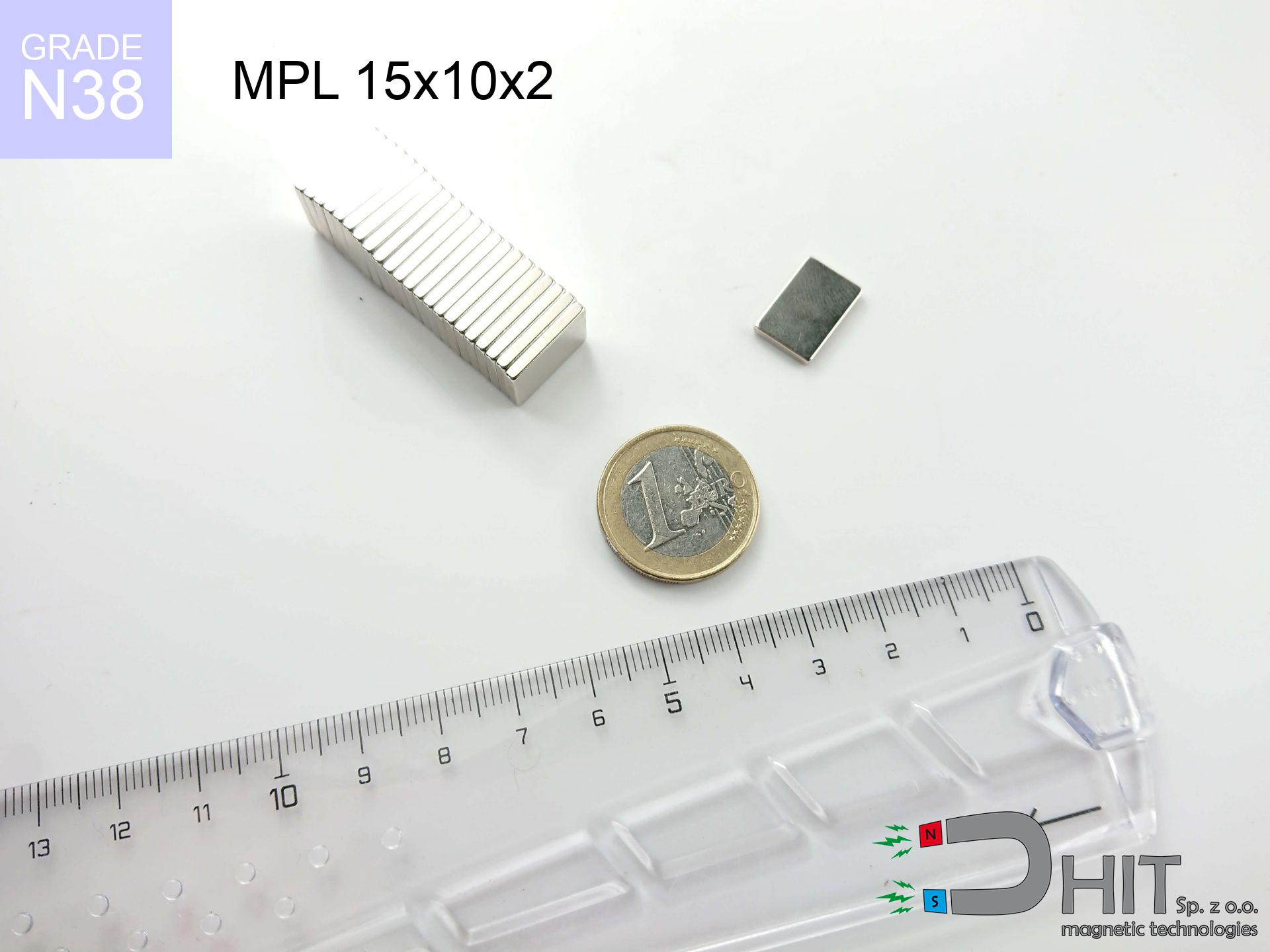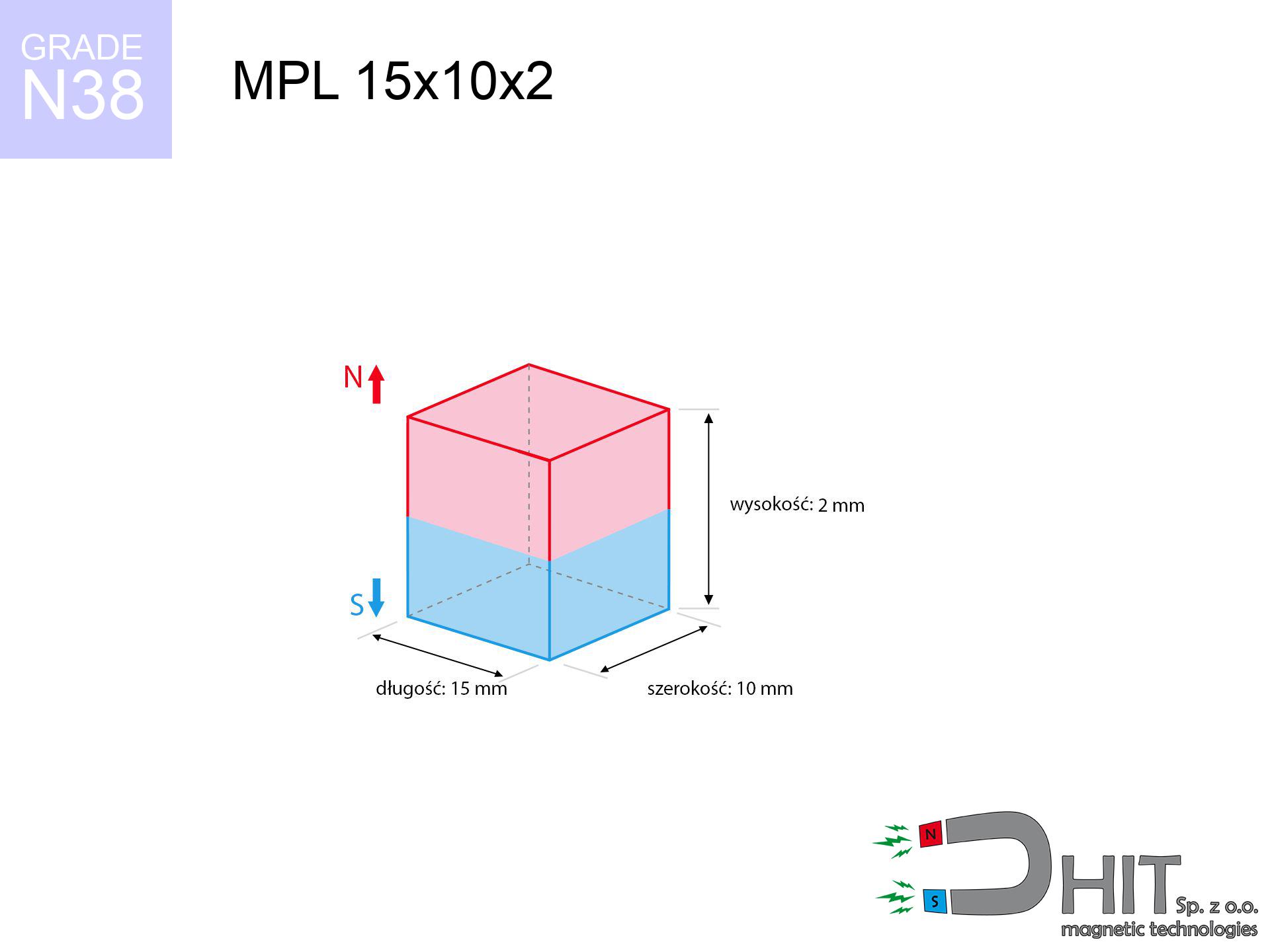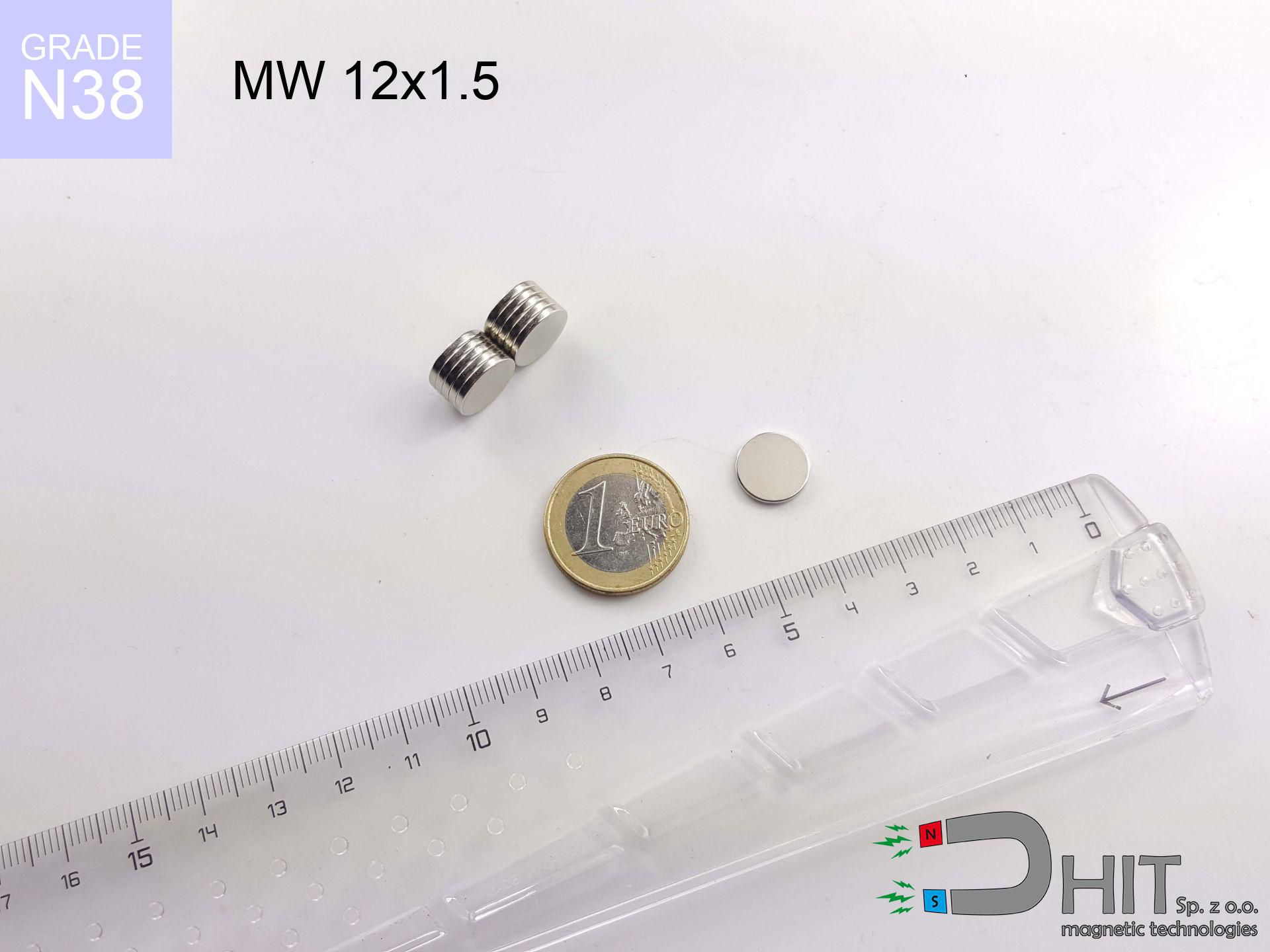MPL 15x10x2 / N38 - lamellar magnet
lamellar magnet
Catalog no 020388
GTIN: 5906301811879
length
15 mm [±0,1 mm]
Width
10 mm [±0,1 mm]
Height
2 mm [±0,1 mm]
Weight
2.25 g
Magnetization Direction
↑ axial
Load capacity
1.93 kg / 18.93 N
Magnetic Induction
180.53 mT
Coating
[NiCuNi] nickel
1.316 ZŁ with VAT / pcs + price for transport
1.070 ZŁ net + 23% VAT / pcs
bulk discounts:
Need more?Not sure what to buy?
Pick up the phone and ask
+48 888 99 98 98
alternatively get in touch by means of
our online form
through our site.
Parameters as well as structure of magnets can be calculated using our
our magnetic calculator.
Order by 14:00 and we’ll ship today!
Magnetic properties of material N38
Physical properties of sintered neodymium magnets Nd2Fe14B at 20°C
Shopping tips
Strengths and weaknesses of NdFeB magnets.
Besides their remarkable field intensity, neodymium magnets offer the following advantages:
- They virtually do not lose strength, because even after 10 years the performance loss is only ~1% (based on calculations),
- Magnets very well defend themselves against demagnetization caused by ambient magnetic noise,
- Thanks to the glossy finish, the plating of nickel, gold, or silver gives an elegant appearance,
- Magnets exhibit exceptionally strong magnetic induction on the active area,
- Neodymium magnets are characterized by extremely high magnetic induction on the magnet surface and are able to act (depending on the shape) even at a temperature of 230°C or more...
- Thanks to flexibility in constructing and the ability to customize to individual projects,
- Versatile presence in advanced technology sectors – they are used in data components, electric motors, precision medical tools, also other advanced devices.
- Thanks to their power density, small magnets offer high operating force, in miniature format,
Disadvantages of NdFeB magnets:
- Brittleness is one of their disadvantages. Upon strong impact they can fracture. We recommend keeping them in a steel housing, which not only protects them against impacts but also increases their durability
- Neodymium magnets decrease their power under the influence of heating. As soon as 80°C is exceeded, many of them start losing their power. Therefore, we recommend our special magnets marked [AH], which maintain stability even at temperatures up to 230°C
- Magnets exposed to a humid environment can corrode. Therefore during using outdoors, we advise using waterproof magnets made of rubber, plastic or other material protecting against moisture
- Limited ability of producing nuts in the magnet and complex shapes - preferred is cover - mounting mechanism.
- Health risk resulting from small fragments of magnets can be dangerous, in case of ingestion, which is particularly important in the aspect of protecting the youngest. It is also worth noting that small components of these magnets are able to disrupt the diagnostic process medical after entering the body.
- High unit price – neodymium magnets are more expensive than other types of magnets (e.g. ferrite), which increases costs of application in large quantities
Highest magnetic holding force – what contributes to it?
Breakaway force was determined for the most favorable conditions, assuming:
- on a base made of mild steel, optimally conducting the magnetic field
- with a thickness no less than 10 mm
- with an polished touching surface
- under conditions of gap-free contact (metal-to-metal)
- for force applied at a right angle (pull-off, not shear)
- at conditions approx. 20°C
Key elements affecting lifting force
Please note that the application force may be lower influenced by elements below, starting with the most relevant:
- Space between surfaces – every millimeter of separation (caused e.g. by veneer or dirt) drastically reduces the magnet efficiency, often by half at just 0.5 mm.
- Force direction – remember that the magnet has greatest strength perpendicularly. Under shear forces, the holding force drops drastically, often to levels of 20-30% of the nominal value.
- Wall thickness – thin material does not allow full use of the magnet. Part of the magnetic field penetrates through instead of generating force.
- Steel grade – the best choice is high-permeability steel. Cast iron may generate lower lifting capacity.
- Surface finish – full contact is obtained only on polished steel. Rough texture reduce the real contact area, reducing force.
- Thermal environment – heating the magnet results in weakening of force. Check the maximum operating temperature for a given model.
* Lifting capacity was measured using a steel plate with a smooth surface of optimal thickness (min. 20 mm), under vertically applied force, however under attempts to slide the magnet the lifting capacity is smaller. Moreover, even a slight gap {between} the magnet and the plate reduces the holding force.
Warnings
Magnetic media
Very strong magnetic fields can erase data on payment cards, hard drives, and storage devices. Stay away of at least 10 cm.
Safe operation
Handle with care. Rare earth magnets act from a long distance and snap with huge force, often faster than you can move away.
Impact on smartphones
Navigation devices and mobile phones are extremely susceptible to magnetic fields. Close proximity with a powerful NdFeB magnet can ruin the internal compass in your phone.
Product not for children
NdFeB magnets are not toys. Accidental ingestion of multiple magnets may result in them connecting inside the digestive tract, which constitutes a severe health hazard and requires urgent medical intervention.
Hand protection
Mind your fingers. Two powerful magnets will join immediately with a force of massive weight, destroying everything in their path. Exercise extreme caution!
Beware of splinters
Protect your eyes. Magnets can explode upon uncontrolled impact, launching sharp fragments into the air. Eye protection is mandatory.
ICD Warning
Warning for patients: Strong magnetic fields disrupt electronics. Maintain minimum 30 cm distance or request help to work with the magnets.
Do not drill into magnets
Combustion risk: Rare earth powder is explosive. Avoid machining magnets without safety gear as this risks ignition.
Permanent damage
Control the heat. Heating the magnet to high heat will destroy its magnetic structure and pulling force.
Sensitization to coating
Some people have a hypersensitivity to nickel, which is the typical protective layer for neodymium magnets. Frequent touching can result in an allergic reaction. It is best to use safety gloves.
Important!
Want to know more? Check our post: Are neodymium magnets dangerous?




![SM 32x300 [2xM8] / N52 - magnetic separator SM 32x300 [2xM8] / N52 - magnetic separator](https://cdn3.dhit.pl/graphics/products/sm-32x300-2xm8-luf.jpg)

![UMGW 60x30x15 [M10] GW / N38 - magnetic holder internal thread UMGW 60x30x15 [M10] GW / N38 - magnetic holder internal thread](https://cdn3.dhit.pl/graphics/products/umgw-60x30x15-m10-gw-cug.jpg)


